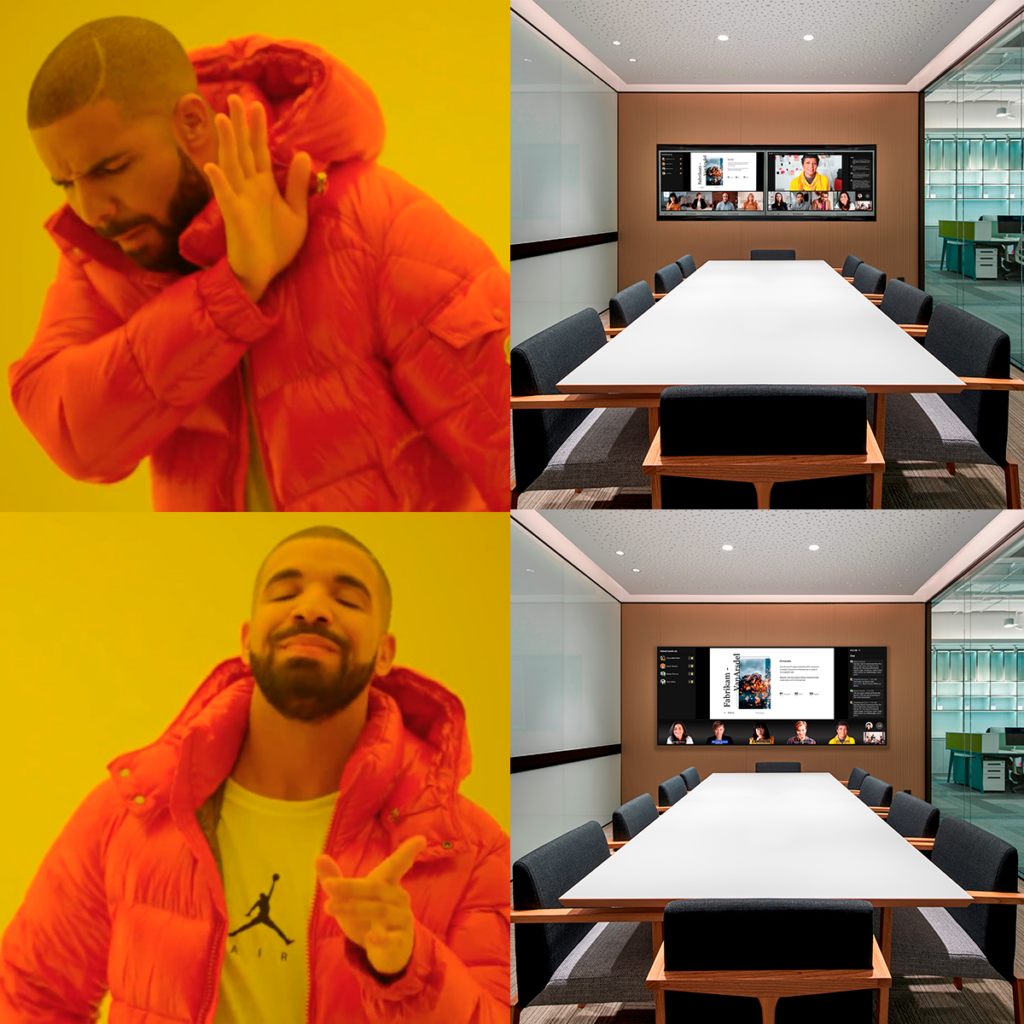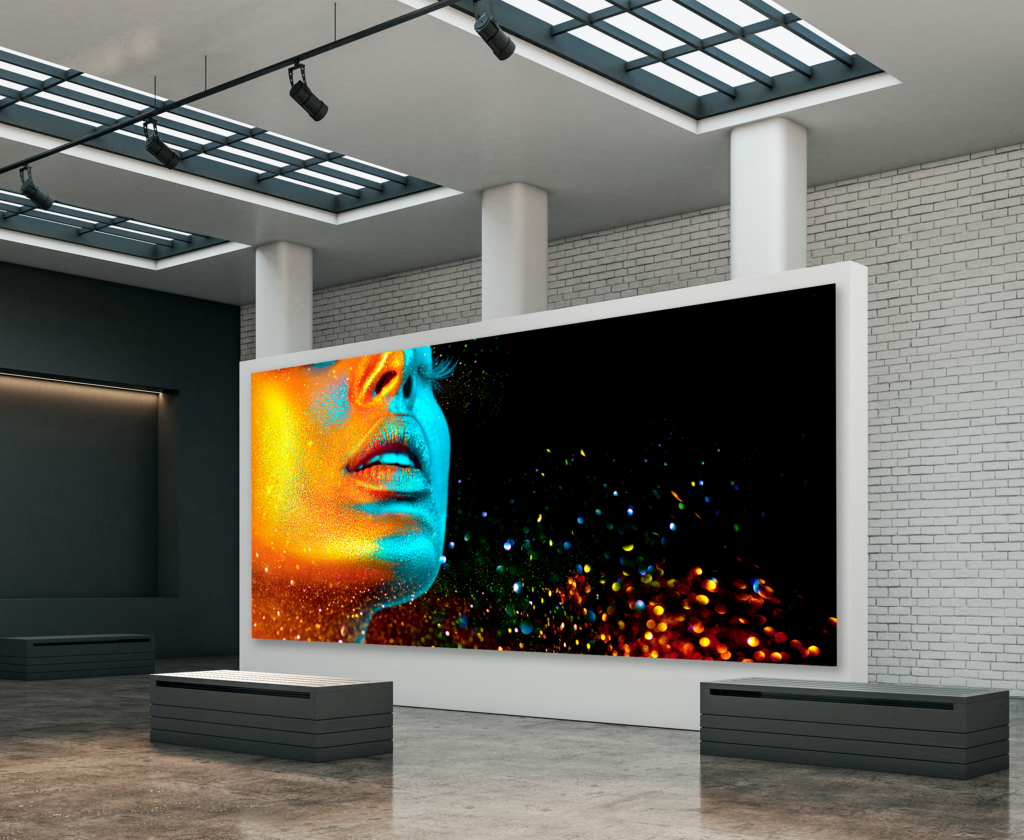The Latin American and Brazilian market for large-format LCD monitors and fine-pixel LED modules has experienced significant growth in recent years, driven by demand from digital advertising, public infrastructure, control centers, events, sports, and entertainment sectors.
Large-Format LCD Monitor Market
- Demand and Growth:
The market for large-format monitors has seen increasing demand, especially in corporate, educational, retail, and entertainment applications. In Brazil and Latin America, the digital signage sector is one of the main drivers of adopting large-format LCD monitors. Airports, shopping malls, transportation hubs, and retail outlets are significant buyers. According to recent reports, Latin America has shown a compound annual growth rate (CAGR) of around 6-8% in the large-format monitor sector, driven by sports and cultural events and the expansion of IT infrastructure.
- Key Manufacturers:
Jupiter, Samsung, LG, Sony, and Philips are market leaders in Brazil and Latin America. In addition to traditional LCD monitors, there is a growing demand for interactive monitors in classrooms and offices. The market is also segmented by resolution options and display technologies.
- Competitiveness of Jupiter’s 21:9 Monitors:
Jupiter’s PANA 105″ and 81″ 5K monitors are designed to redefine performance in environments that demand large, ultra-high-resolution displays. With their expansive 21:9 aspect ratio, these displays deliver 33% more pixel density than traditional 4K monitors, providing the ideal solution for control centers, corporate video walls, and collaborative environments where precision and clarity are paramount. Whether in portrait or landscape, the 105″ and 81″ PANA models create a visual experience that maximizes productivity and engagement by fitting more data and critical information into your line of sight without sacrificing readability.
The touch versions offer 20 simultaneous touch points for teams requiring hands-on interaction, making them perfect for interactive collaboration and presentations. Despite their large size, these displays are lightweight and easy to install with standard hardware, reducing infrastructure costs and ensuring an effortless retrofit into any professional environment. The Energy Star certification and impressive lifetime ensure a lower total cost of ownership while maintaining top-tier performance .
To further boost performance, the PANA monitors can have an optional OPS CPU featuring an 11th Gen Intel i7 processor, 16GB of RAM, and NVMe storage, delivering robust processing power directly within the display. The OPS module supports 5K resolution, offers multiple connectivity options such as Thunderbolt 4.0, HDMI, and Wi-Fi 6, and is designed for seamless multitasking in high-demand environments. The PANA series ensures peak performance, connectivity, and versatility for real-time data analysis, control centers, or multimedia-rich corporate presentations.
As part of the PANA family, the PANA 34 model reminds us of Jupiter’s commitment to innovation. It offers a smaller 21:9 display with 4K resolution and a built-in camera for more personal interactive experiences. However, the true strength of the PANA line lies in the power and scale of its 105″ and 81″ displays, setting a new standard for large-format visual excellence.
Fine-Pixel LED Module Market
- Growth and Trends:
Fine-pixel LED modules (under 2 mm pixel pitch) are increasingly used in high-definition applications, such as control centers, conference rooms, TV studios, and videowalls for advertising and entertainment. Fine-pixel LED technology offers high-quality images even at short distances, making it ideal for large-scale video walls in corporate, commercial, and governmental environments. Due to large-scale events (such as trade shows and exhibitions) and infrastructure projects, Brazil is one of Latin America’s leading LED panel markets. The expected annual growth for this market is 10%.
- Key Manufacturers:
Jupiter, Unilumin, Absen, Planar, and Barco are among the region’s leading manufacturers of fine-pixel LED solutions. Additionally, companies have been investing in developing MicroLED panels, which are considered an evolution of traditional LEDs for high-performance installations.
- Advantages of Jupiter’s LED Modules:
Jupiter’s groundbreaking ZAVUS MicroLED modules offer an unparalleled competitive advantage, offering precision pixel pitches of 1.2, 0.9, and an impressive 0.7 mm. Powered by advanced Flip-Chip COB technology, ZAVUS modules ensure superior heat dissipation and energy efficiency, extending the lifespan of the LEDs. HDR and 8K compatibility deliver unmatched color vibrancy and detail, making them ideal for high-definition advertising and critical environments like control centers, crisis, and meeting rooms. The cobalt coating adds durability and brightness, ensuring peak performance even in high-light conditions. Backed by the Helios LED Processing Platform, which optimizes 8K and HDR displays for maximum visual impact and is monitored in real-time by the Omnis AV system, Jupiter’s ZAVUS MicroLED modules set a new standard for reliability and brilliance. When precision and performance matter, ZAVUS leads the way.
Challenges and Opportunities:
While adoption is rising, the cost of fine-pixel LED modules remains relatively high, especially for large installations. However, prices are expected to drop as technology matures, allowing for greater market penetration. Another challenge in Brazil and Latin America is logistics and distribution, as many modules are manufactured in Asia and require importation.
Markets
Regional variations in adoption rates, technological infrastructure, and economic factors may influence growth in these specific markets.
- Mexico: Mexico has one of the most developed markets in Latin America, with strong demand for digital signage, control centers, and digital advertising, particularly in cities like Mexico City and Monterrey. Proximity to the U.S. also facilitates access to new technologies and investments.
- Central America: Market growth tends to be more moderate, influenced by infrastructure and investment levels. Countries like Panama and Costa Rica are seeing growing tourism and digital advertising demand.
- Argentina and Chile: The market has been growing consistently. Demand for large-format monitors and LED panels is mainly driven by the corporate and digital advertising sectors, especially in cities like Buenos Aires and Santiago. These countries increasingly adopt video walls and control centers as they invest in digital infrastructure.
- Colombia and Peru: These countries show continuous growth in the digital advertising and IT infrastructure sectors, although the adoption of advanced technologies, such as fine-pixel LED panels, is still in its early stages. In cities like Bogotá and Lima, demand for digital signage and control center solutions is increasing.
- Brazil: Sectors such as digital advertising, IT infrastructure, and control centers drive demand for LCD monitors and LED modules. Cities like São Paulo and Rio de Janeiro are hubs of innovation and demand for videowalls and interactive monitors, especially for large-scale events and expanding public transportation networks.
Financial Forecasts and Future Prospects
The growth of this market is directly tied to investments in digital infrastructure and the demand for immersive visual experiences. Latin America is a strategic market, with projected increases in investments in digital signage and high-resolution solutions for corporate centers. Post-pandemic economic recovery is also expected to strengthen these sectors.
- LCD Market: The large-format monitor segment continues to benefit from new investments in digital signage and the expansion of technology infrastructure in areas like education and government.
- LED Market: The fine-pixel LED market is expected to grow annually by over 10% in Latin America, mainly due to the demand for solutions in control centers and large-scale advertising.
These trends present a clear opportunity for Jupiter to expand its operations, especially with its 5K monitors and fine-pixel LED modules, which meet critical needs in advanced sectors.
References:
- Mordor Intelligence — Monitor the Market – Share, Trends, and Size
https://www.mordorintelligence.com/pt/industry-reports/computer-monitor-market
- Exactitude Consultancy — Computer Monitor Market Size and Industry Trends 2024
https://exactitudeconsultancy.com/es/blog/2024/01/29/mercado-de-monitores-de-computadora
- Exactitude Consultancy — Computer Monitor Market, Size, and Industry Trends 2024
https://exactitudeconsultancy.com/pt/blog/2024/01/29/mercado-de-monitores-de-computador
- Mordor Intelligence — Industrial Monitor Market, Market Size, and Share Analysis – Industry Research Report – Growth Trends
https://www.mordorintelligence.com/pt/industry-reports/industrial-monitor-market



